When dark clouds gather and rain begins to pelt the forest floor, an extraordinary survival strategy unfolds in certain tropical regions. The vine snake, a master of disguise, transforms itself from predator to seemingly harmless vegetation. This remarkable reptile has evolved one of nature’s most ingenious camouflage techniques—mimicking falling twigs during storms to catch prey off guard or avoid becoming prey itself. This adaptive behavior represents one of the animal kingdom’s most sophisticated examples of mimicry, allowing these slender hunters to thrive in environments where visibility and detection mean the difference between life and death.
The Vine Snake’s Identity
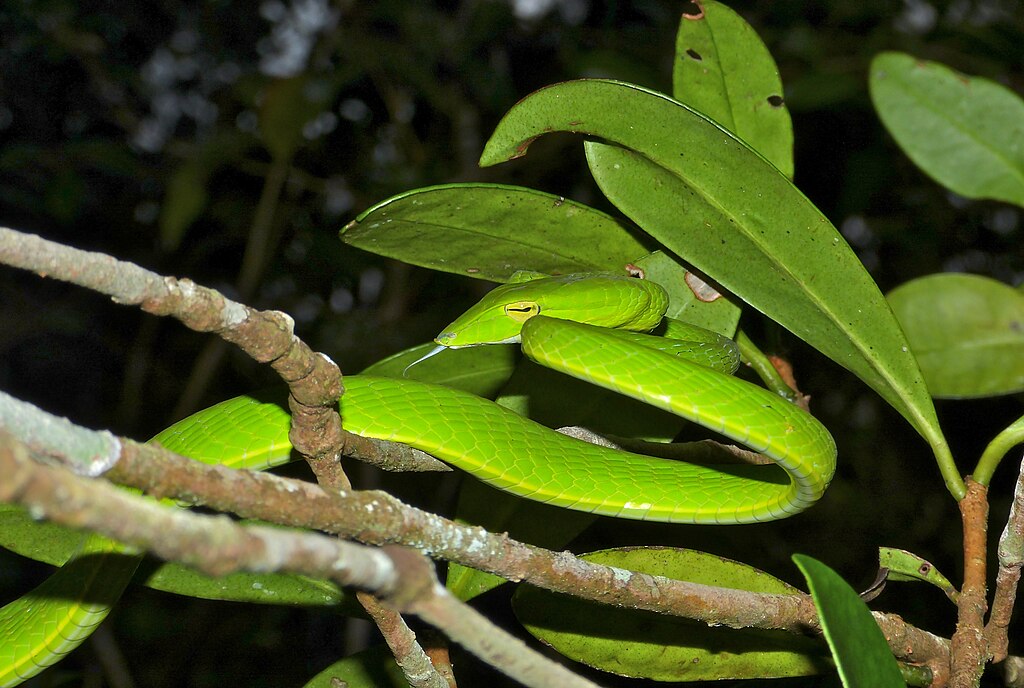
Vine snakes (primarily from the genera Ahaetulla and Oxybelis) are slender, elongated reptiles specialized for life among the branches and foliage of tropical forests. With their extraordinarily thin bodies, pointed snouts, and muted green or brown coloration, these snakes already possess physical characteristics that make them difficult to distinguish from the vegetation they inhabit. Their bodies, which can reach lengths of up to 6 feet in some species while maintaining a diameter comparable to a pencil, allow them to stretch across gaps between branches without being detected. The vine snake’s horizontal pupils—uncommon among snakes—provide enhanced depth perception crucial for judging distances when striking at prey from their arboreal perches. This specialized morphology sets the stage for their remarkable behavioral adaptations during stormy weather.
The Art of Twig Mimicry
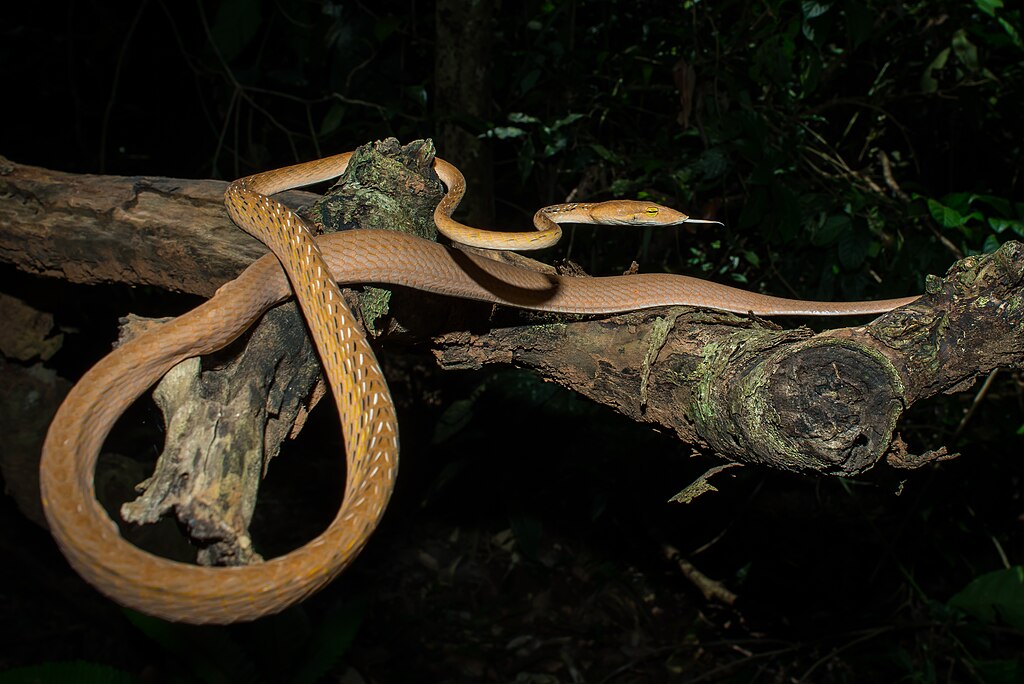
The vine snake’s mimicry during storms represents a sophisticated form of crypsis—the ability to avoid detection through various techniques. When rain begins to fall, these cunning predators adopt a rigid, straight-line posture, allowing their bodies to hang down from branches at angles that perfectly mimic twigs or small branches displaced by wind and rain. They will often position themselves with their head pointing downward, enhancing the illusion of a broken branch. The snake maintains complete stillness, sometimes for hours, even as other vegetation sways in the wind. This behavior is particularly effective because during storms, many small animals are already on heightened alert, making the motionless snake virtually invisible against the backdrop of actual falling debris and moving vegetation.
Evolutionary Development of the Behavior
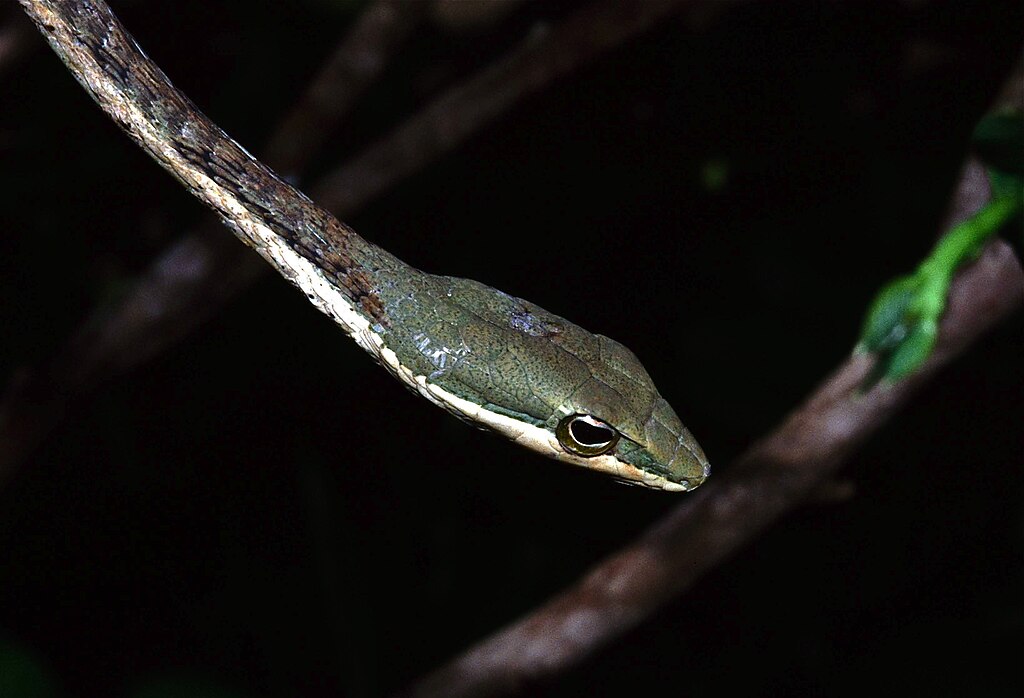
Scientists believe this specialized behavior evolved through generations of natural selection in competitive tropical ecosystems where predator-prey relationships drive increasingly sophisticated adaptations. The vine snake’s twig-mimicking behavior likely developed gradually, with individuals displaying even slightly better camouflage gaining survival and hunting advantages over their counterparts. The behavior appears to be instinctive rather than learned, with juvenile vine snakes demonstrating the ability without having observed adults performing it. This evolutionary adaptation represents a remarkable example of convergent evolution, as similar twig-mimicking behaviors have independently evolved in certain insects like stick insects and mantids. The precise timing of when this adaptation first appeared remains unknown, but it likely dates back millions of years, reflecting the ancient pressures of predator-prey dynamics in forest ecosystems.
The Hunting Advantage
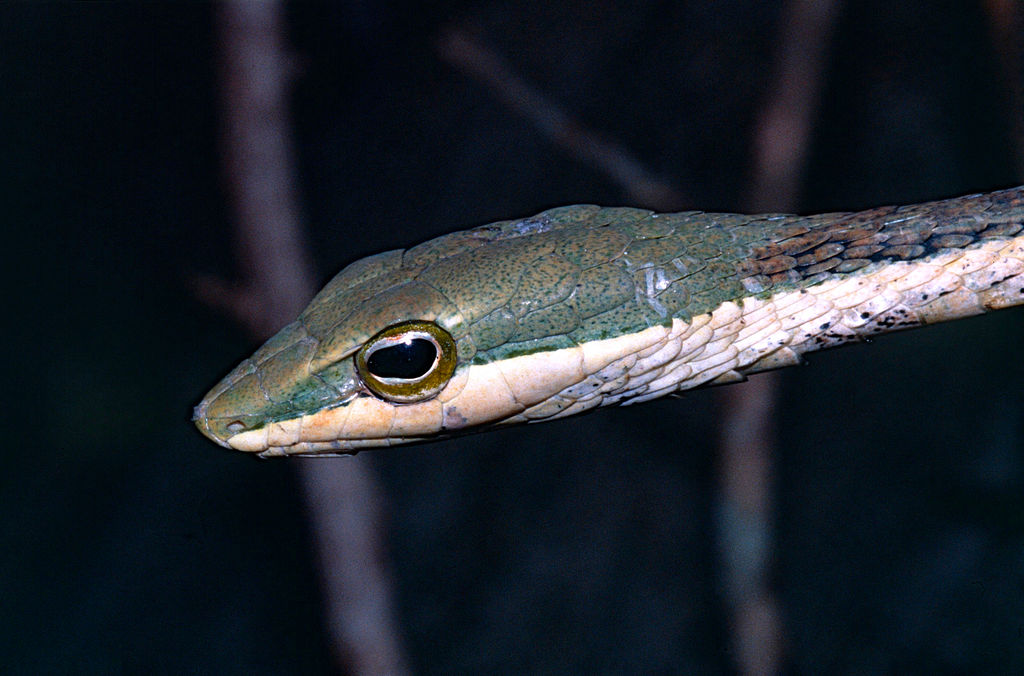
The twig-mimicking posture serves a dual purpose for the vine snake, with hunting being perhaps the most significant benefit. During storms, many potential prey animals—small birds, lizards, and frogs—seek shelter and become more concentrated in protected areas, creating prime hunting opportunities. The vine snake positions itself strategically along paths that these animals might travel when seeking cover, appearing as nothing more than displaced vegetation. When unsuspecting prey ventures within striking distance, the motionless predator can launch a lightning-fast attack, its jaws opening wide to reveal a surprisingly large gape. The element of surprise is nearly complete, as prey animals have evolved to recognize the threat of moving predators rather than seemingly inanimate objects. This hunting strategy allows vine snakes to maintain high success rates even in environments where prey has evolved strong predator-detection abilities.
Predator Avoidance Through Disguise

While hunting benefits explain part of the twig-mimicking behavior, protection from the vine snake’s own predators provides equally strong evolutionary pressure for this adaptation. Despite being predators themselves, vine snakes face threats from larger snakes, birds of prey, and mammals that would readily make a meal of these slender reptiles. By resembling falling or broken vegetation during storms, vine snakes effectively disappear from the detection capabilities of many predators that rely on movement or distinctive snake-like shapes to identify potential prey. Even sharp-eyed predators like hawks and eagles, which normally have exceptional vision, can be fooled by this disguise, especially amid the visual chaos of blowing vegetation during a storm. This defensive strategy proves particularly valuable for a snake that lacks venom potent enough to deter large predators and whose slender body offers little physical defense.
Weather-Triggered Responses

The vine snake’s behavioral shift doesn’t occur randomly but appears finely tuned to specific environmental triggers associated with incoming storms. Research indicates these snakes can detect subtle atmospheric pressure changes that precede rainfall, allowing them to adopt their twig-mimicking posture before the first raindrops fall. Changes in light intensity, increasing humidity, and even the sound of distant thunder may serve as additional cues triggering this specialized behavior. The snakes appear most likely to engage in twig mimicry during the initial phases of a storm and during brief breaks in rainfall, times when prey animals are most likely to be moving toward or between shelter locations. This sensitivity to weather conditions demonstrates the sophisticated sensory capabilities of these reptiles and their ability to integrate multiple environmental cues into advantageous behavioral responses.
Regional Variations in the Behavior

Fascinating regional variations exist in how different vine snake species implement their twig-mimicking strategy. Asian vine snakes (Ahaetulla species) often position themselves on the outer edges of vegetation where falling twigs would naturally accumulate, while their Central and South American counterparts (Oxybelis species) frequently hang from middle canopy positions that intersect animal pathways. In regions with pronounced wet and dry seasons, the behavior becomes more frequent and prolonged during the transition to the rainy season when storms are more common but not yet continuous. Some populations in extremely wet rainforest regions display the behavior almost daily, while those in more seasonal forests might only employ it during specific storm events. These regional adaptations reflect the fine-tuning of the behavior to local ecological conditions and predator-prey dynamics.
The Physical Mechanics of Mimicry
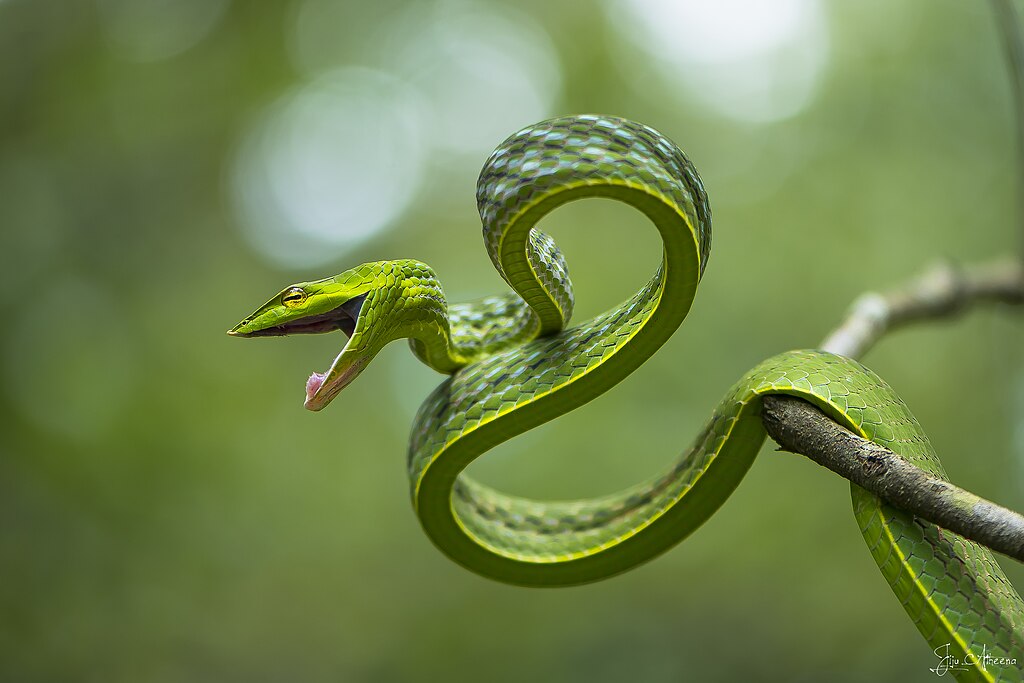
Achieving convincing twig mimicry requires remarkable physical control that showcases the vine snake’s specialized musculature and skeletal structure. To maintain the rigid, straight-line posture necessary for the illusion, these snakes employ a combination of muscle tension and strategic positioning of their vertebrae. Unlike many snakes that maintain a subtle S-curve even when stretched out, vine snakes can lock their spine into a perfectly straight configuration. They achieve this through specialized interlocking processes on their vertebrae and uniquely developed epaxial muscles running along their spine. The snake’s ability to remain completely motionless, sometimes for hours, despite the discomfort of maintaining an unnatural position, demonstrates remarkable endurance and metabolic efficiency. Even more impressive, they can maintain this rigid posture while simultaneously preparing their striking muscles for instantaneous action when prey ventures within range.
Scientific Documentation and Study
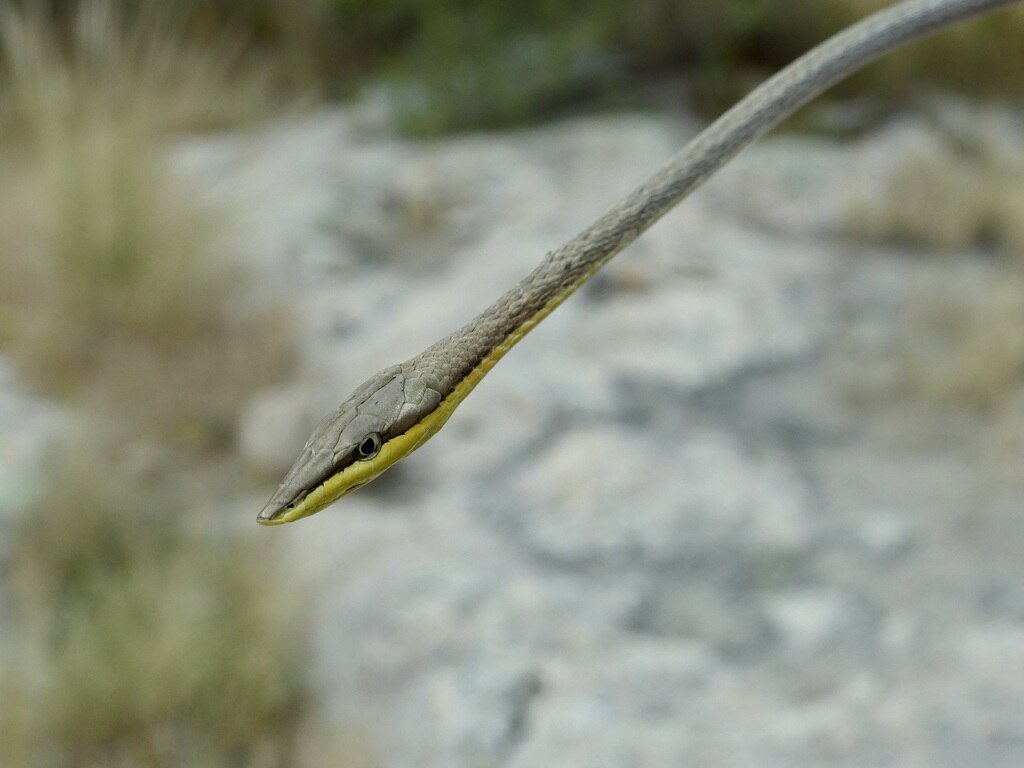
The vine snake’s twig-mimicking behavior, while known anecdotally to indigenous peoples of tropical forests for centuries, has only recently received serious scientific documentation and study. Field research using high-speed photography has revealed that these snakes can transition from twig-mimicking posture to striking position in less than 50 milliseconds, making this transformation virtually invisible to the human eye. Recent studies using controlled environmental chambers have confirmed the snake’s ability to detect barometric pressure changes as small as 2 millibars, explaining how they anticipate storms before visible signs appear. Ongoing research using infrared imaging is exploring whether these snakes also adjust their body temperature during mimicry to better match the thermal signature of vegetation, potentially making them even more difficult for heat-sensing predators to detect. Despite these advances, significant gaps remain in our understanding of this behavior’s neurological basis and its full ecological significance.
The Challenge of Observation
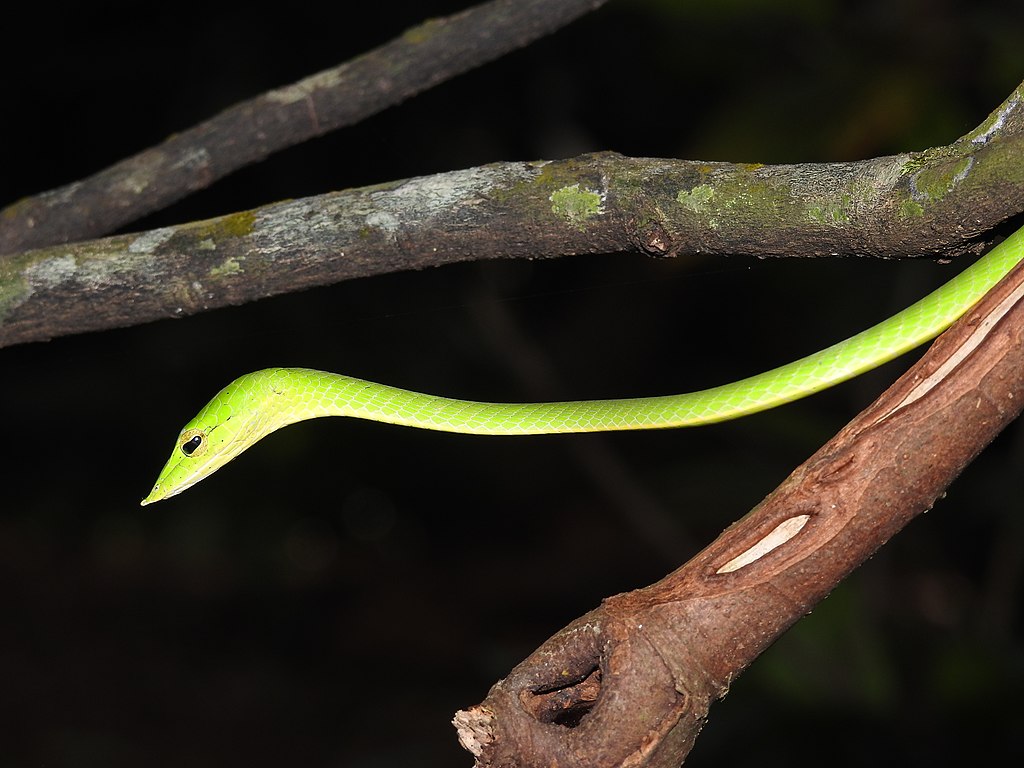
Studying vine snakes in their natural habitat presents significant challenges that have limited scientific understanding of their twig-mimicking behavior. The very effectiveness of their camouflage makes them extraordinarily difficult for researchers to locate, particularly during the stormy conditions when the behavior is most prominently displayed. Many observations occur by chance rather than through planned study. Remote camera traps, while useful for many wildlife studies, struggle to differentiate the motionless snakes from actual vegetation, resulting in few documented instances captured through automated methods. Researchers often must spend hundreds of field hours in challenging weather conditions to witness the behavior firsthand. Additionally, the behavior may be inhibited by human presence, meaning that observer effect could be compromising the very phenomenon scientists hope to document.
Similar Behaviors in Other Species

The vine snake’s twig mimicry, while remarkable, exists within a broader context of similar adaptations across the animal kingdom. The Southeast Asian vine snake (Ahaetulla prasina) demonstrates perhaps the most developed version of this behavior, but related strategies appear in other species. The brown vine snake of Central America (Oxybelis aeneus) combines twig mimicry with a head-swaying behavior that simulates a twig moving in the breeze. Outside the snake world, certain praying mantis species adopt rigid, stick-like postures during rainfall, and some spider species pull their legs together to resemble seed pods during storms. These examples of convergent evolution highlight how similar environmental pressures can produce comparable adaptive solutions across distantly related animal groups. The vine snake’s behavior stands out for its sophistication and the precision with which it integrates multiple aspects of mimicry—form, positioning, timing, and contextual awareness.
Conservation Implications
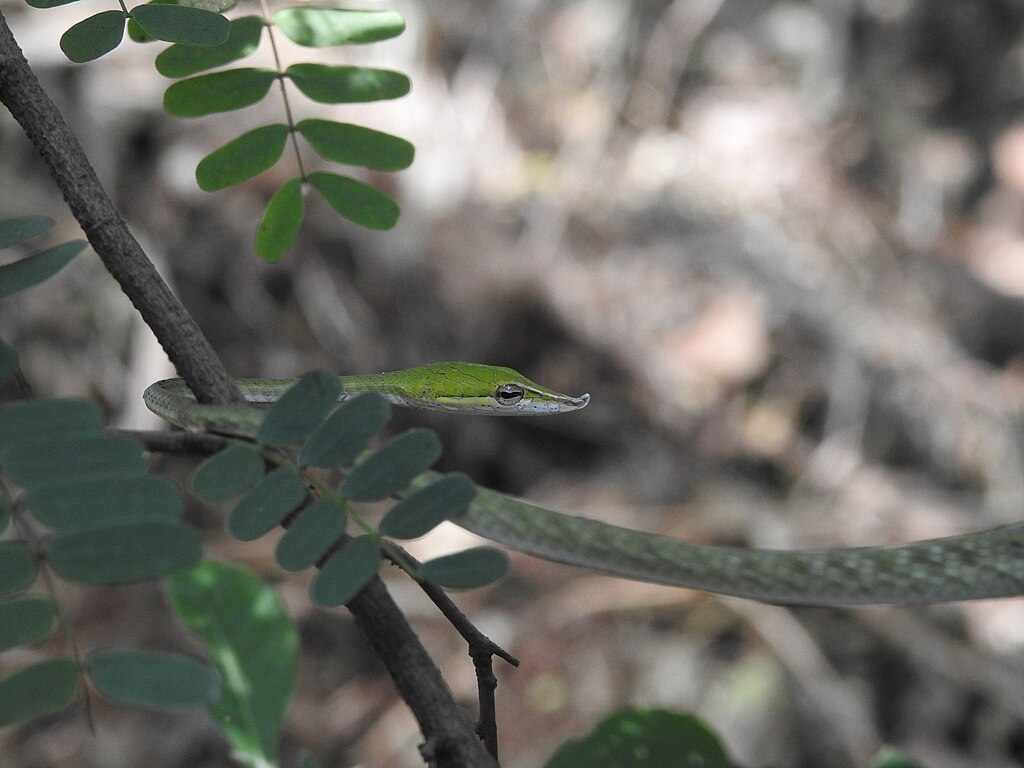
The specialized nature of the vine snake’s adaptation raises important conservation concerns as tropical forests face unprecedented threats. Deforestation significantly reduces viable habitat for these canopy specialists, while climate change alters the predictability of storm patterns that trigger their mimetic behavior. As rainfall becomes more erratic in many tropical regions, the effectiveness of a behavioral adaptation timed to traditional weather patterns may be compromised. Additionally, the clearing of undergrowth in managed forests removes the complex vegetation structure needed for effective camouflage, potentially exposing these snakes to higher predation rates. Conservation efforts specifically addressing vine snakes remain limited, as these non-venomous species rarely receive the attention directed toward more charismatic or dangerous reptiles, despite their ecological significance and remarkable behavioral adaptations.
Cultural Significance and Human Interactions

Across their range, vine snakes and their twig-mimicking behavior have earned recognition in the traditional knowledge systems of indigenous forest communities. In parts of the Amazon, certain tribes consider the vine snake a symbol of patience and strategic thinking, with hunting stories referencing the snake’s ability to become “invisible in plain sight.” In Southeast Asian folklore, these snakes sometimes feature as forest spirits capable of transforming between animal and plant forms. Despite their mild venom, which poses little threat to humans, vine snakes often suffer from human persecution due to general ophidiophobia (fear of snakes) and misidentification with more dangerous species. Educational outreach highlighting their remarkable adaptations and ecological role has shown promise in improving local attitudes toward these harmless and fascinating reptiles, particularly when emphasizing their role in controlling populations of agricultural pests.
Conclusion
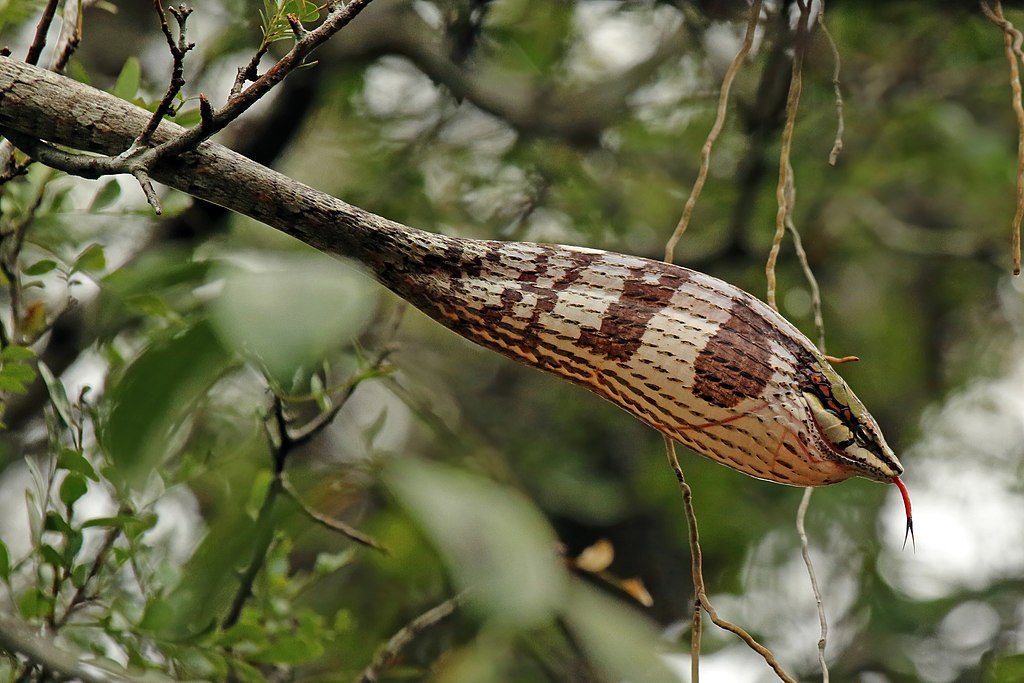
The vine snake’s ability to mimic falling twigs during storms represents one of nature’s most elegant solutions to the dual challenges of hunting and avoiding predation. This behavior, perfected over evolutionary time, demonstrates the remarkable adaptability and specialization possible within seemingly simple organisms. As researchers continue to document and study this phenomenon, we gain not only a deeper appreciation for the complexity of reptilian behavior but also important insights into the sophisticated ways that predator-prey relationships shape the natural world. The vine snake reminds us that sometimes the most effective survival strategies involve becoming invisible not through absence, but through becoming something so ordinary that it escapes notice entirely—a lesson in adaptation that continues to inspire scientists and nature enthusiasts alike.





